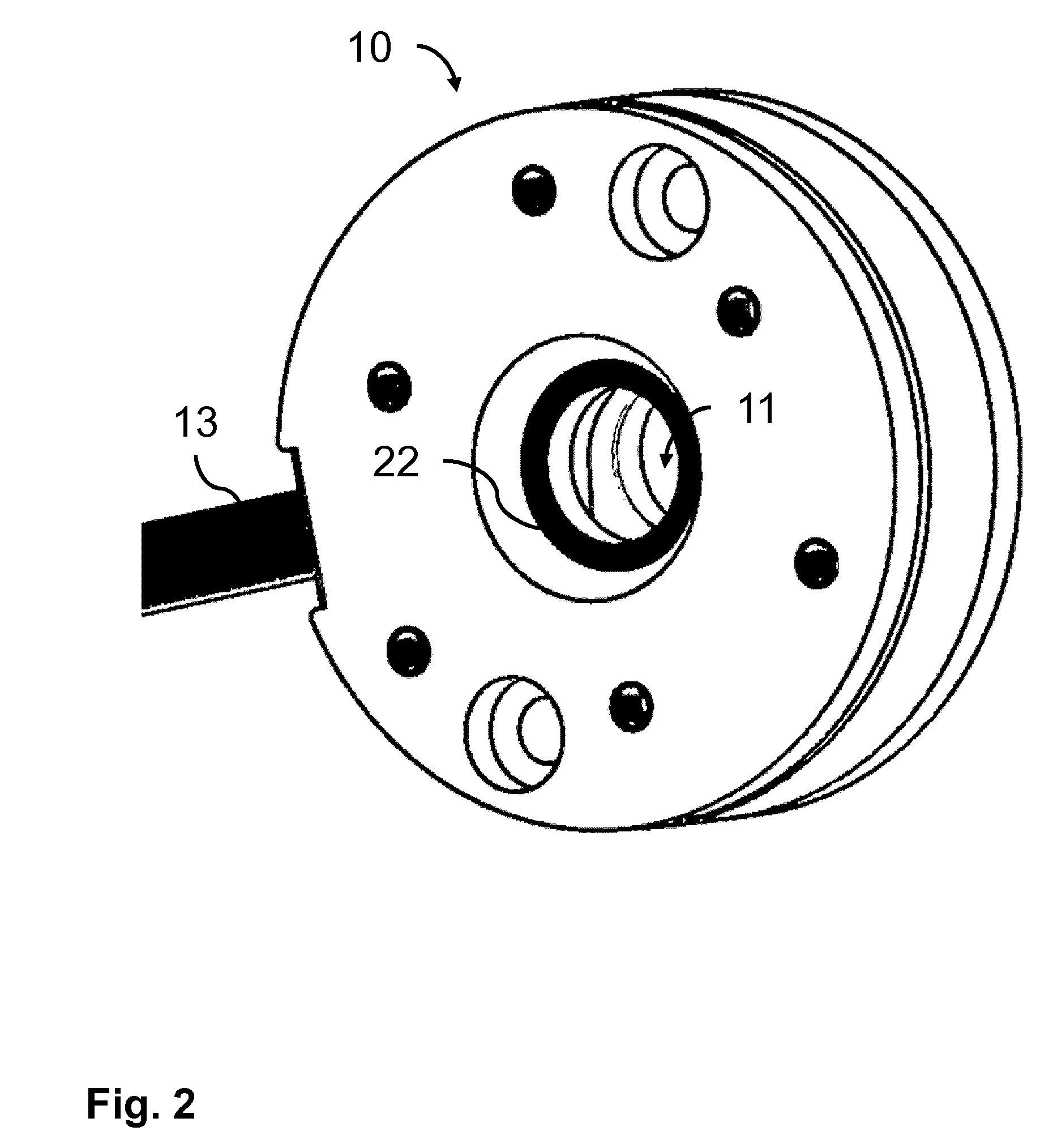IR spectrometry cell with temperature control means
a technology of ir spectrometry and sample cell, which is applied in the direction of spectrometry/spectrophotometry/monochromator, optical radiation measurement, instruments, etc., can solve the problems of temperature increase, temperature increase, and heat transfer from heat resistors, through metal heating blocks, to the temperature sensor takes some time, so as to improve the temperature stability of the sample cell
- Summary
- Abstract
- Description
- Claims
- Application Information
AI Technical Summary
Benefits of technology
Problems solved by technology
Method used
Image
Examples
Embodiment Construction
[0020]FIG. 1 schematically shows a cross section of a sample cell 10 according to the invention. The sample cell 10 comprises two transparent plates 11, separated by spacers 14. In, e.g., milk analysis by IR spectrophotometry the spacers usually provide a 20-40 μm (micrometer) wide cavity 17 between the two substantially parallel plates 11. The transparent plates 11 may, e.g., be made of glass, crystalline calcium fluoride (CaF2) or transparent plastics. Also diamond may be used for producing the sample cell 10. In order to be suitable for IR spectrophotometry, the plates 11 only have to be transparent for the IR wavelengths used for the IR spectrophotometry, but it may be practical to select a material that is also transparent for visible light. If the user can look into the cavity 17, it is possible to visually inspect the analyzed liquid. If the sample cell is also used for analysis methods involving light of a different wavelength, the transparent plates 11 also have to be trans...
PUM
| Property | Measurement | Unit |
|---|---|---|
| thermally conductive | aaaaa | aaaaa |
| transparent | aaaaa | aaaaa |
| temperature | aaaaa | aaaaa |
Abstract
Description
Claims
Application Information
 Login to view more
Login to view more - R&D Engineer
- R&D Manager
- IP Professional
- Industry Leading Data Capabilities
- Powerful AI technology
- Patent DNA Extraction
Browse by: Latest US Patents, China's latest patents, Technical Efficacy Thesaurus, Application Domain, Technology Topic.
© 2024 PatSnap. All rights reserved.Legal|Privacy policy|Modern Slavery Act Transparency Statement|Sitemap



